What is real?
Experiencing a heightened reality through VR and AR.
-
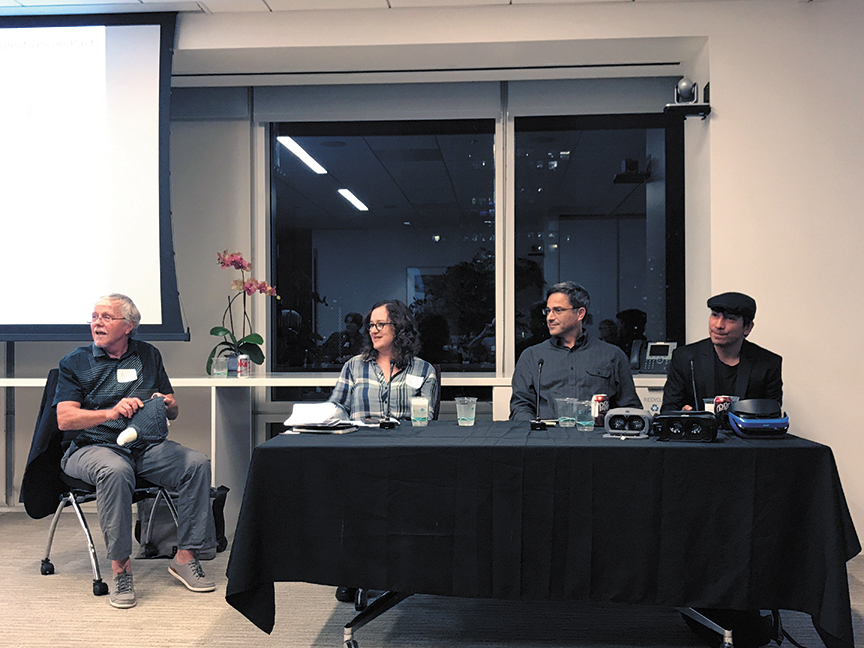 Silicon Vikings: VR/AR moderator & panelists; (L-R) Eilif Trondsen, Linda Jacobson, Christopher Peri, and Damon Hernandez. Photo: Ted Olsson
Silicon Vikings: VR/AR moderator & panelists; (L-R) Eilif Trondsen, Linda Jacobson, Christopher Peri, and Damon Hernandez. Photo: Ted Olsson -
-
Though many people may not think of it this way, we are all accustomed to alternate realities. They go by the names: fiction, drama, movies. Spielberg has created an empire from it. Early readers of space odysseys were groomed for careers in NASA.
-
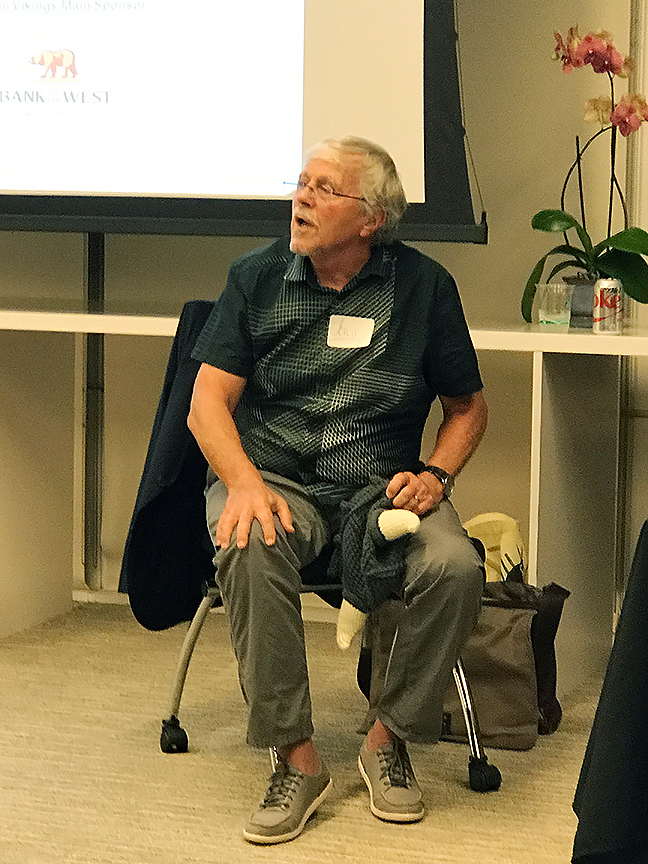 Eilif Trondsen, moderator and leader of Silicon Viking’s Entrepreneurism & Education SIG. Photo: Ted Olsson
Eilif Trondsen, moderator and leader of Silicon Viking’s Entrepreneurism & Education SIG. Photo: Ted Olsson -
-
Today technology has made “reality” a generational differentiator. Young “digerati” are familiar with alternate versions of reality — which are often experienced as equally “real” — such as in computer gaming. Here the user is so immersed in the experience of pursuing the game’s objectives, that he appears to be totally consumed by this alternate or Virtual Reality (VR).
Another version is where actual reality is compounded simultaneously by additional information. Cameras and cell phones are already able to scan and translate signs from a foreign language into one’s own, or to translate dictation or listening from one language into another. This Augmented Reality (AR) was best represented by the concept of Google glasses, where one could see the world as it is, but projected privately onto the lenses of the glasses, receiving additional information visually or audibly (privately) about the current environment: about the person in front of you, foreign language translations of conversations, GPS or digital feedback from one’s surroundings, or geological, historical and other information about one’s surroundings.
A third form of this digital reality is provided by haptic technologies. This digital technology simulates the aspects of reality for other senses, particularly touch.
This means from now on, the answer to the simple question “What is real?” will be much more complex. Yesterday’s future is today experienced through technology, and it is that which informed Silicon Vikings’ excellent fall program titled “Revisiting Immersive Environments: Perspectives on the Past and Future of VR/AR.” -
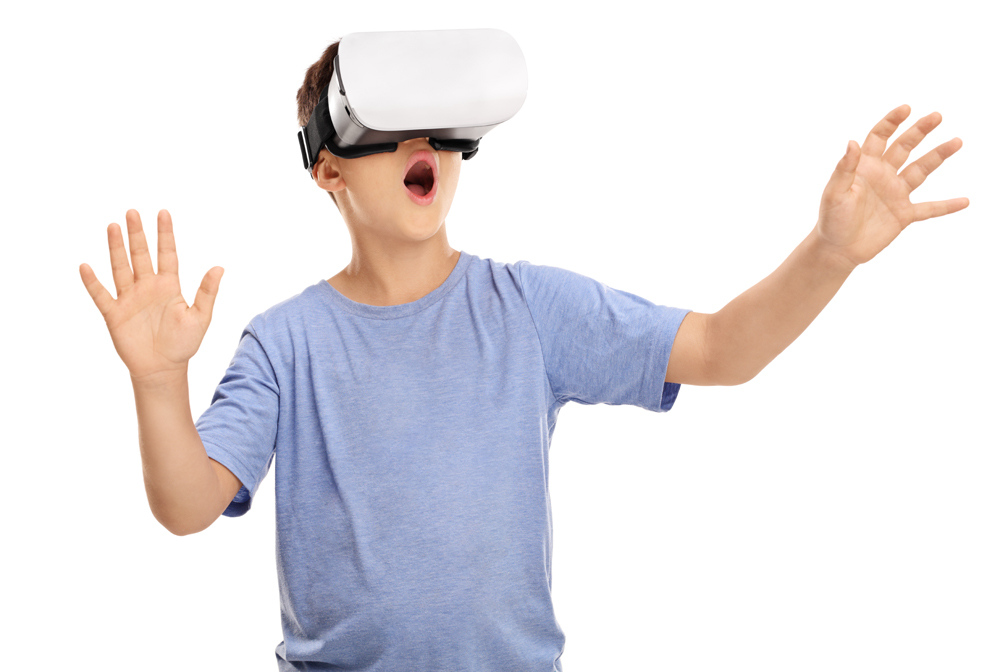
-
Continued interest
This was actually the third annual program on this topic in the Vikings’ Special Interest Program (SIG) on Entrepreneurship and Learning led by Eilif Trondsen, formerly of SRI and currently a futurist consultant.
This year two veterans of the previous programs returned with one new panelist. Damon Hernandez, Samsung’s product manager for Web Platform and Virtual Reality, is an entrepreneur and advocate for immersive technologies; he leads hackathons worldwide. The second veteran panelist was Dr. Christopher Peri, Samsung’s director of Business Development in the Mobile field. At Samsung’s Research Lab, he works on mobile strategy, tech resourcing and supporting the GearVR project. The new panelist, Linda Jackson, was the world’s first professional VR evangelist (for Silicon Graphics) and co-founded VR meetups for five years at the Exploratorium in San Francisco. Now at Treasure8 she specializes in VR for food and restaurant companies, as well as bringing mobile VR experiences to residents of assisted living communities.
As moderator, Eilif Trondsen asked the panelists to mention what they like about VR and AR. They raised interesting subjects such as how VR acts with Big Data and the connectivity and enhanced capabilities concerning ethics, equity and privacy, especially for people with cognitive and physical impairments; these technologies could also be used more effectively in daily business and education, architecture and engineering. -
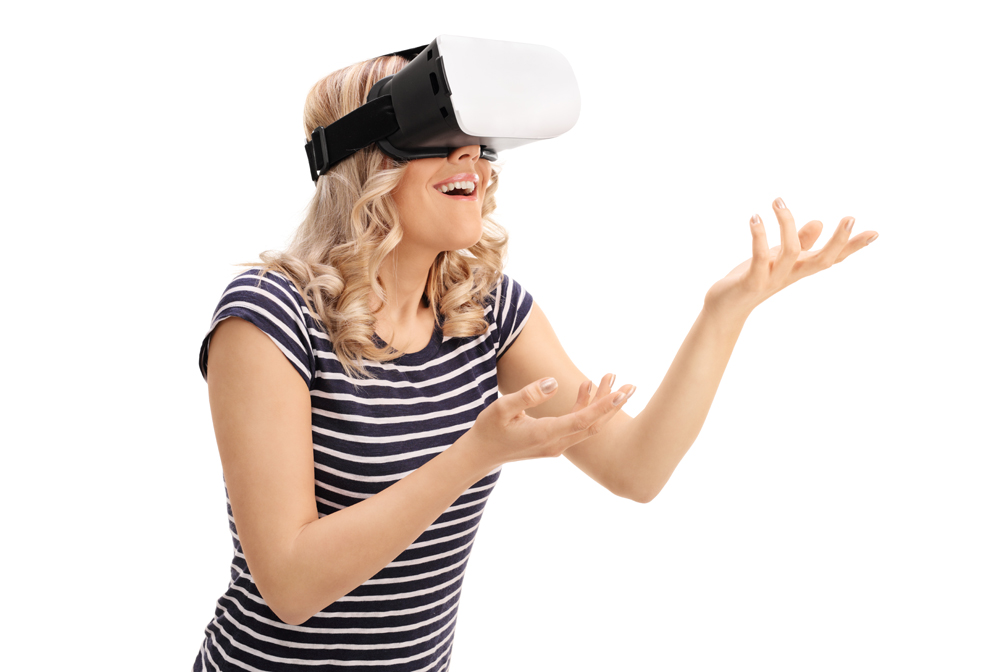
-
Then the conversation moved to whether middle managers were blocking adoption of these technologies, but Damon said hackathons were very convincing and quickly dropped the costs of competitive products. Chris, who is proud to be at Samsung in the forefront of VR, said it is catching on.
The question is whether the future has everyone wearing glasses. These can show everything more immersively than the cell phones in our hands. Like the ubiquitous dual camera dots on our cell phones, new glasses will contain these powerful binocular cameras on both sides of the frames, not merely scanning what we see, but monitoring where we are looking and magnify anything at our will.
Of course, the wizardry packed into our cell phones, more powerful than the mainframes of recent decades, may yet again be reduced further by greater magnitudes into ever-smaller microprocessors, perhaps the size of a credit card, business card, dogtag, necklace or religious charm. And future VR/AR glasses may be complemented with sensors monitoring one’s actions. -

-
Augmenting reality
At the moment AR is trailing VR, though construction companies are already using these technologies — not merely to “walk through” designed buildings and experiencing the place before it is built but also onsite during construction to build and inspect the site for safety and standards. -
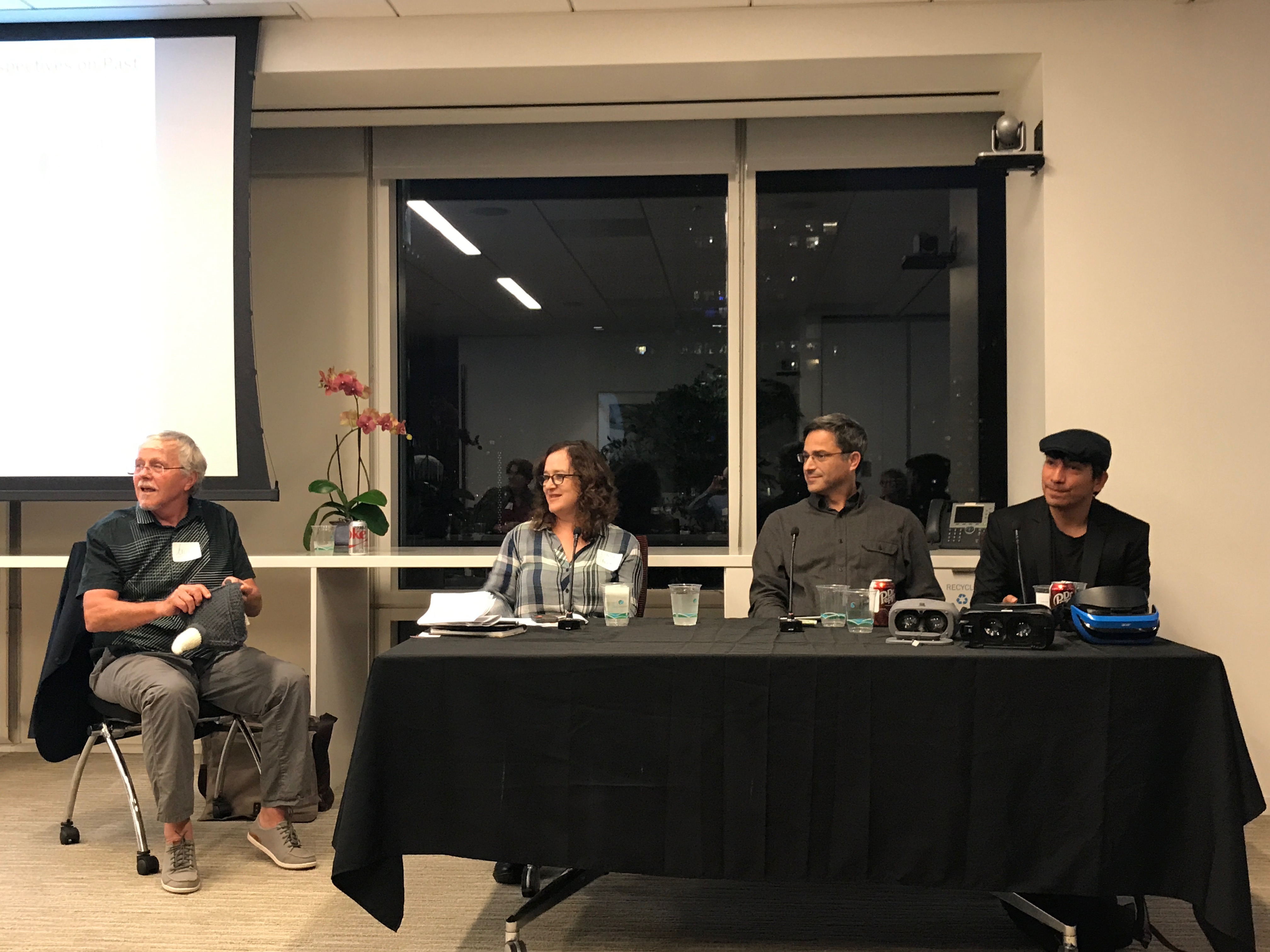 Caption: Silicon Vikings: VR/AR moderator & panelists; (L-R) Eilif Trondsen, Linda Jacobson, Christopher Peri, and Damon Hernandez. Attribution: © 2017 Ted Olsson
Caption: Silicon Vikings: VR/AR moderator & panelists; (L-R) Eilif Trondsen, Linda Jacobson, Christopher Peri, and Damon Hernandez. Attribution: © 2017 Ted Olsson -
Similarly, financial agents will be able to walk into their graphs to appreciate and actually experience hidden implications and consequences, particularly if artificial intelligence (AI) prompts one to inspect relationships. Imagine what AR and AI can do for weather forecasting. Consider what more inventive PowerPoint decks might become in the hands of a dramatic narrator. And when examining a patient, augmented genomic information from a patient’s appearance will aid physicians in greatly enhanced diagnoses of disease and afflictions; forensic scientists will complement forensic artists in more accurate facial recognition gained from genomic information in a drop of blood.
-
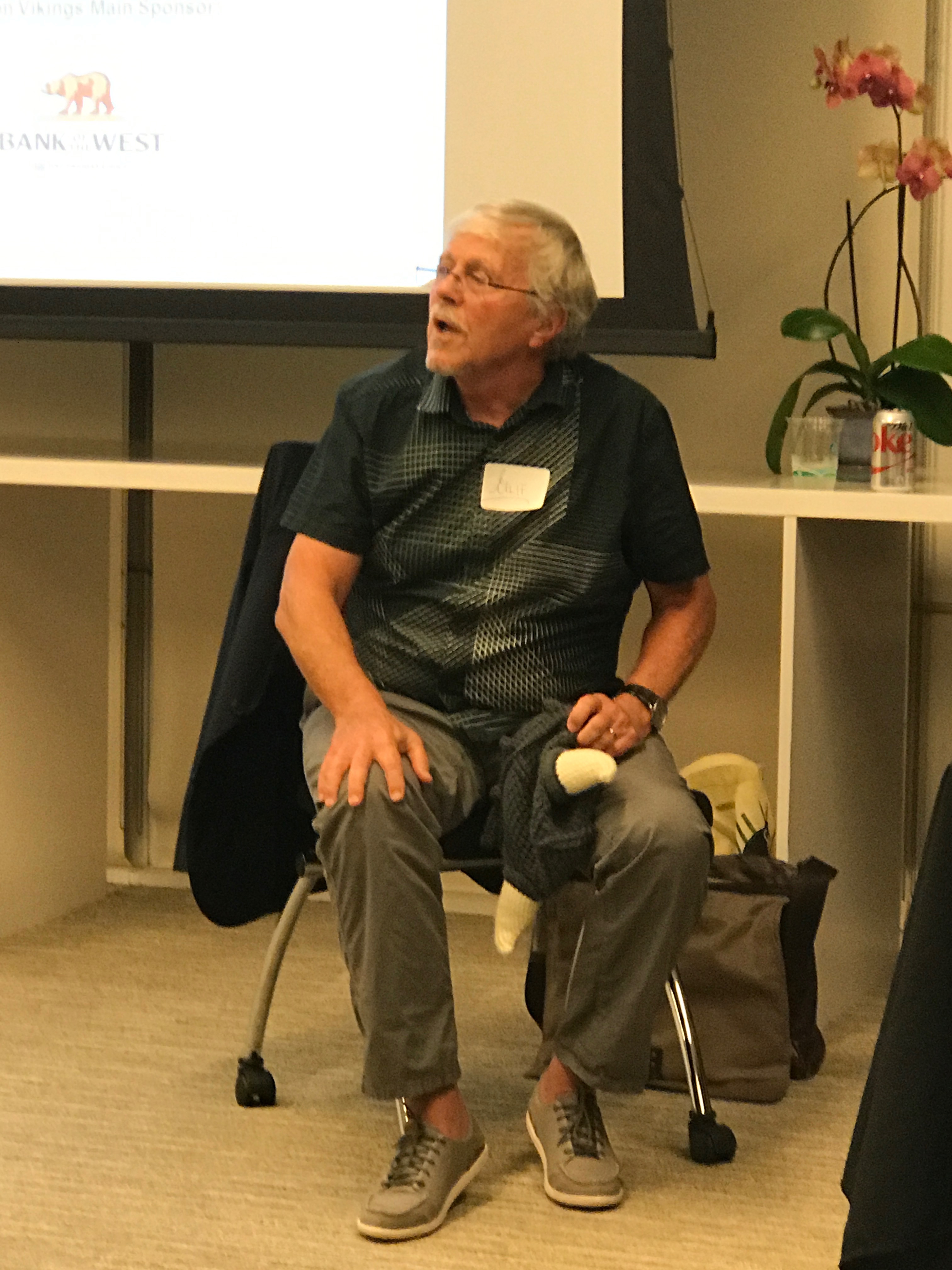 Caption: Eilif Trondsen, moderator and leader of Silicon Viking’s Entrepreneurism & Education SIG. Attribution: © 2017 Ted Olsson
Caption: Eilif Trondsen, moderator and leader of Silicon Viking’s Entrepreneurism & Education SIG. Attribution: © 2017 Ted Olsson -
Of course the real advantage — and danger — to all of this is artificial intelligence. For VR and AR to work across populations requires the collection, storage and search resources that only the world’s largest digital companies can apply to Big Data. This presents significant privacy concerns for western democracies in particular.
-
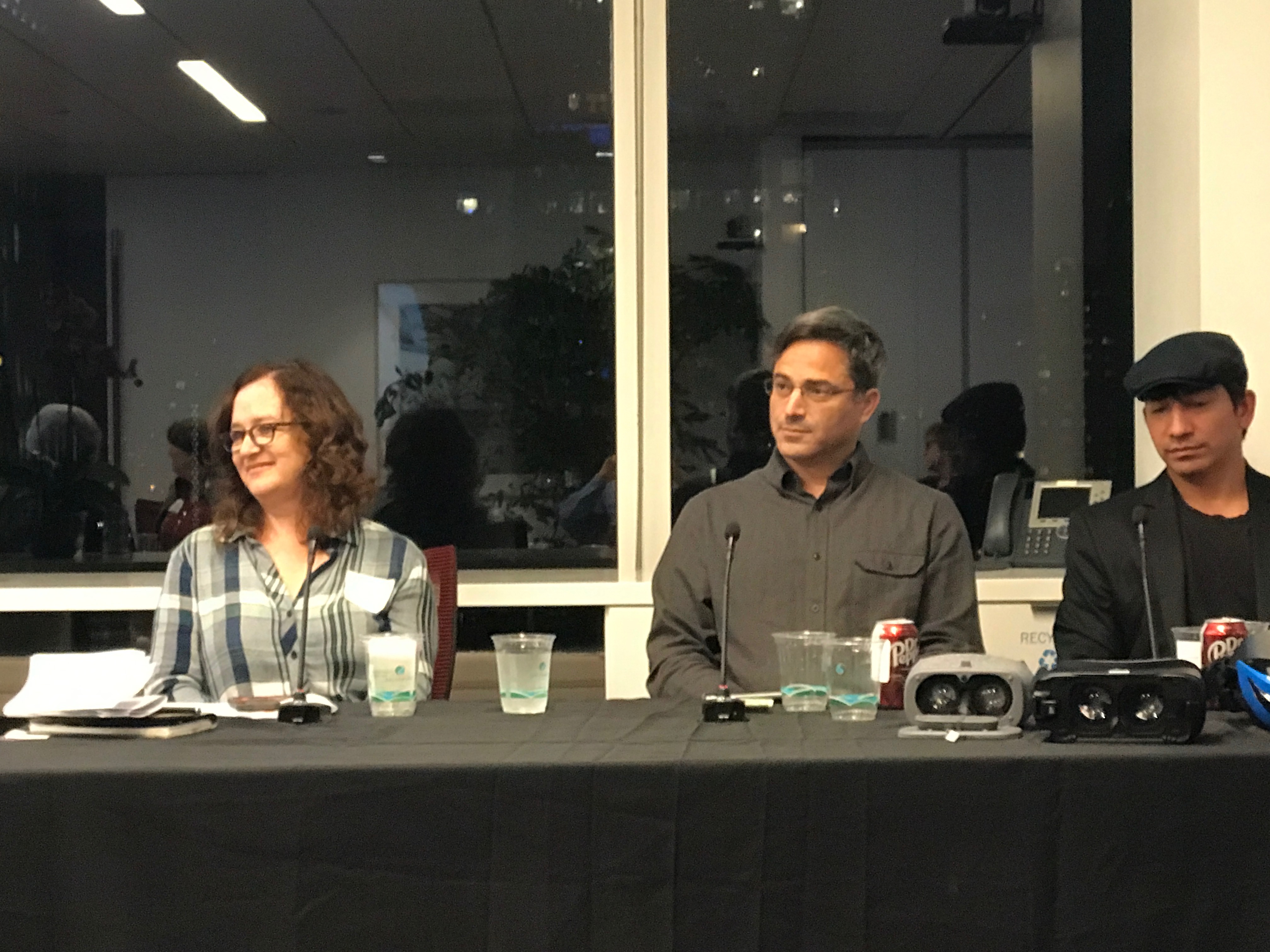 Caption: (L-R) Panelists: Linda Jacobson, Christopher Peri, and Damon Hernandez. Attribution: © 2017 Ted Olsson
Caption: (L-R) Panelists: Linda Jacobson, Christopher Peri, and Damon Hernandez. Attribution: © 2017 Ted Olsson -
Humanizing alternate realities
Linda now focuses on “collaborative visualization.” She believes VR is more interesting to high-volume, low-cost businesses seeking cost-cutting ways to remain competitive. For example, how does a manufacturer find the quantitative proposition for a tortilla machine or a lab tool, before investing a lot of money to build and test the physical device? Some hospitals are using VR to treat PTSD and prepping for surgery, it’s also being used to teach students math and even chemistry at the molecular level. -
Both Apple (with its ARKit) and Google (ARCore plus Google VPS, Virtual Positioning System) are experimenting with AR and its educational advantages. The Maker Movement is another fertile complementary field, as are various medical fields, astronomy, and cinematic rendering (CT/MRI data can produce photorealistic 3D images) is beneficial in paleontology.
-
What else is new?
All the panelists believe that greater adoption of this technology will lower the threshold prices and further acceptance and distribution. This industry will create new, simpler artificial reality devices and toolkits, which will in turn generate jobs and wealth. -
Chris is most interested in VR/AR content created for the web, and Damon is more intrigued with these reality tools helping one daily, just as we adapted to cell phones. Like multi-user gaming, as the web incorporates VR, this will allow multiple users and devices to be simultaneously connected, so that many can study, analyze, and confer on the simulation.
Some felt that new reality glasses would quickly come to market, supporting maps, voice recognition, and audio. Chris of Samsung speculated that Apple would be late to market. One week later Apple introduced its new products. Using greatly improved cameras, Apple demonstrated that it would be a very active player in immersive reality. Sometimes Apple waits for others to prototype a technology only to come out with superior or more esthetic tools. Now the race is on for who can best enhance a user’s experience. Linda mentioned her best example of haptic technology was watching a miniature pony while feeling it pawing in the palm of her hand. -
Questions answered
In answering questions, Linda thought that the best business apps would be those simulating dangerous or hazardous conditions. Simulation training is an important capability for all of humanity. For humanitarian purposes, she hopes that VR/AR might be used by foundations and philanthropies. The Virtual Worlds Society (VWS, under Tom Furness) is funding projects for the public good. One of the most important humanitarian uses of VR/AR is bringing therapeutic experiences to impaired or incapacitated persons.
Chris felt that the best VR business applications will emphasize simple visualization, while AR would enhance our working with data and with people. Both VR&AR have a good future in mental health services and exercises. With our opioid epidemic, he noted that drug addicts’ protocols are similar to those for PTSD. For humanitarian purposes, he believed that the reality technologies will become most important in teaching and training us for empathy in famine, floods, and war. -
Damon thought that one of the biggest uses, both for businesses and government might be in planning smart cities, such as has been done in Vancouver at the University of British Columbia; so that one could “live in them” before building or modifying them. However, some European cities are far advanced in this beyond those in the US. After allowing for obvious security considerations to prevent terrorists from using it, some European municipalities already have mapped their city with 3D data and that from Google Earth. They offer this to developers who can then integrate their developments into the present and planned fabric of the city.
-
Another enhancement might be to use VR/AR to attract young people into trades, especially those students more inclined to pick up a game controller than a book. He too felt that empathic experience gained from reality apps, allowing one “to walk in another’s shoes,” without being preached at, are likely to be more convincing and enduring experiences.
-
An educator entrepreneur reminded all that the equipment and software must be inexpensive enough for all schools (primary, secondary, and collegiate) so that students can use them to create new realities. Both the upside and downside of such learning environments is the massive amounts of data needed to create such simulations. Reality tutors with infinite patience may mentor students with appropriate immersive and individualized lessons. Damon foresaw that the same technology used to train troops will also be used to train activists.
-
What is reality? More than we anticipated. Imagine the demands that this will place on users and how these tools will enhance their knowledge, imagination, and creativity.
-
By Ted Olsson
-
-
